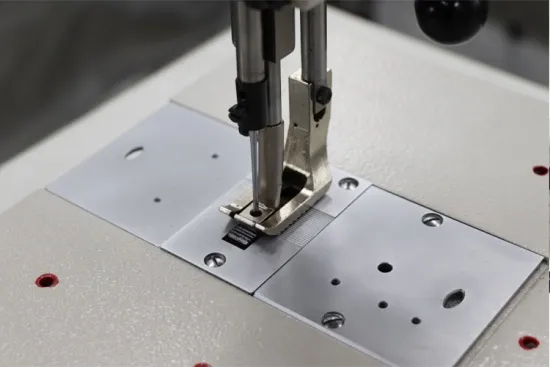Choosing the Right Needle for Sewing Faux Leather Projects
Choosing the Right Sewing Machine Needle for Faux Leather A Comprehensive Guide
When it comes to sewing faux leather, selecting the appropriate needle for your sewing machine is crucial. Faux leather, also known as vegan leather or synthetic leather, is widely used in fashion, upholstery, and various craft projects due to its versatility and durability. However, sewing this material requires specific tools and techniques to achieve the best results. In this article, we will delve into the various needle types suited for faux leather, proper needle usage, and tips to ensure a successful sewing experience.
Understanding Faux Leather
Faux leather is made from synthetic materials, primarily polyurethane (PU) or polyvinyl chloride (PVC). This material mimics the look and texture of genuine leather but is often more affordable and cruelty-free. While it is an excellent alternative, faux leather can be challenging to sew due to its unique properties, such as thickness, stretch, and tendency to stick.
Selecting the Right Needle
1. Universal Needles A standard choice for many sewing projects, universal needles typically have a slightly rounded point, which works well for woven and knit fabrics. However, when sewing faux leather, they may not pierce the material cleanly and can lead to skipped stitches and damage.
2. Leather Needles These are the preferred choice for sewing faux leather. Leather needles have a sharper, wedge-shaped point that can effectively penetrate the synthetic material without tearing it. They also produce cleaner stitches and reduce the risk of damaging the fabric.
3. Ballpoint Needles For stretchy faux leather, using a ballpoint needle is advisable. The rounded tip of the ballpoint needle pushes fabric fibers apart rather than cutting through them, making it ideal for stretchy or elastic faux leather materials.
4. Twin Needles If you want to create decorative stitches or emulate the look of topstitching on faux leather, consider using twin needles. Available in various widths, twin needles can help achieve a professional finish while sewing parallel lines simultaneously.
Needle Size Matters
sewing machine needle for faux leather

Apart from the type of needle, the size also plays a significant role in how well you can sew faux leather. A larger needle size, typically between 80/12 to 100/16, is recommended for heavier and thicker faux leathers, while a smaller size may suffice for thinner materials. Choosing the right size will help prevent needle breakage and ensure that stitches are even and secure.
Tips for Sewing Faux Leather
1. Use the Right Thread The thread you select for your project can make a big difference. Polyester thread is a great option as it has some stretch and can withstand the tension of faux leather without breaking easily. Additionally, consider using a thicker thread for added durability.
2. Adjust Tension Settings Faux leather can be tricky to handle, so it’s important to adjust your sewing machine's tension for optimal results. Start with the standard tension settings and make adjustments as necessary to ensure a smooth stitch.
3. Presser Foot Choices A walking foot or Teflon foot can be very helpful when sewing faux leather. These specialized feet will help guide the material without causing it to stick, allowing for smoother sewing.
4. Sewing Speed Slow down your sewing speed when working with faux leather. This extra caution will ensure better precision and help prevent any accidents or misalignments.
5. Test Swatches Before starting on your main project, always sew on a test swatch of the faux leather. This practice can help you fine-tune your settings and needle choice, ensuring a perfect result when it counts.
Conclusion
Sewing faux leather does not have to be a daunting task. By selecting the right needle—preferably a leather needle—and taking the necessary precautions, you can create beautiful, durable sewn items. With patience and practice, your skills will improve, and you’ll become more comfortable working with this versatile material. Happy sewing!
-
Boost Production Efficiency with a Pattern Sewing MachineNewsAug.29,2025
-
Industrial Excellence with the Best Heavy Duty Sewing MachineNewsAug.29,2025
-
Precision and Power with the Best Pattern Sewing MachineNewsAug.29,2025
-
Reliable Bulk Packaging Starts With the Right FIBC Sewing MachineNewsAug.29,2025
-
Advanced Packaging Solutions: Elevate Productivity with Jumbo Bag Sewing Machine and Industrial Stitching EquipmentNewsAug.29,2025
-
High-Performance Solutions for Bulk Packaging: FIBC Sewing Machine and MoreNewsAug.29,2025
-
Maximize Efficiency with an Industrial Cylinder Arm Sewing MachineNewsAug.28,2025


























